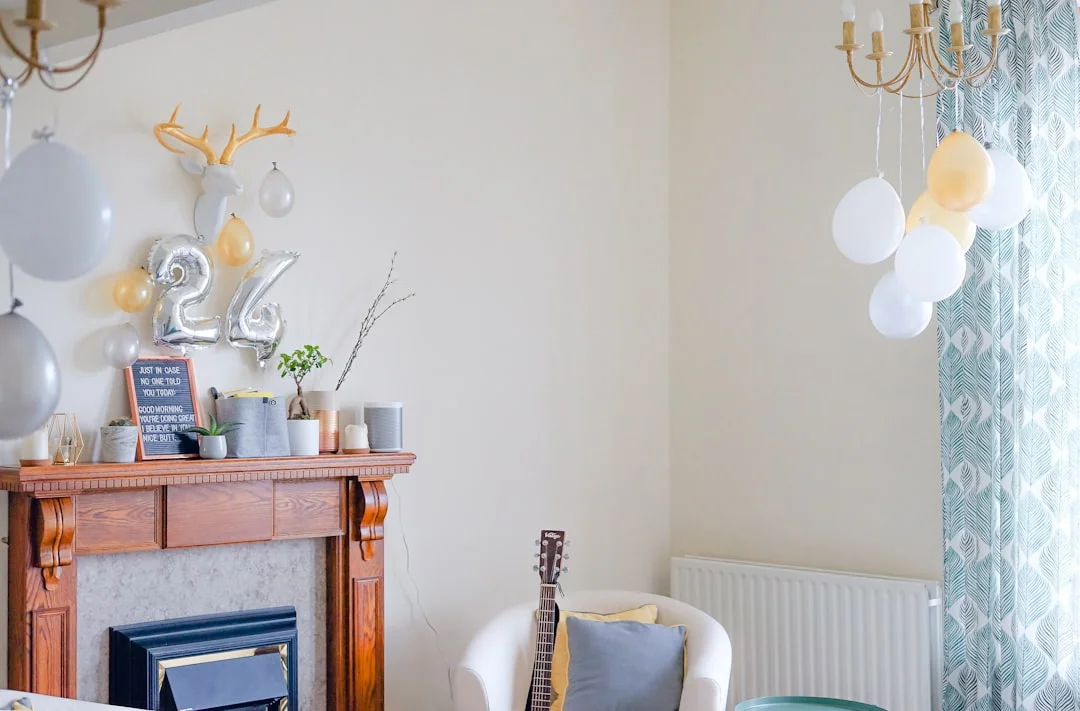Estimated Reading Time: 9 minutes
Estimated Reading Time: 9 minutes
II today’s world, we’re all increasingly aware of the importance of detoxifying our bodies.
We load up on green smoothies and intermittent fasting, all in the pursuit of feeling our best.
But what about the spaces where we spend the majority of our lives – our homes?
They, too, can harbor a hidden world of toxins, silently impacting our health and well-being. The good news?
How to detox your home environment is a journey that’s both manageable and incredibly rewarding.
I’m here to guide you through the steps, sharing some personal anecdotes and easy-to-implement tips along the way.
Let’s be honest, we spend a lot of time indoors, often without a second thought about what we’re breathing in or touching.
From volatile organic compounds (VOCs) released from paint and furniture to dust mites thriving in our carpets, our homes can sometimes feel less like havens and more like silent health hazards.
But don’t be discouraged! How to detox your home environment isn’t about turning your house into a sterile lab.
It’s about making conscious choices to minimize exposure to these toxins and create a space that supports your health and happiness.
It’s about reclaiming your home as a sanctuary.
The air we breathe is, quite literally, the lifeblood of our existence.
One of the most critical aspects of how to detox your home environment is focusing on air quality.
Think about it: we often seal up our homes, especially during colder months, which can trap pollutants indoors.
This is where things like air purifiers, good ventilation, and smart choices become crucial.
Consider adding a high-quality air purifier with a HEPA filter to your home.
These filters excel at capturing dust, pollen, pet dander, and other common allergens.
Remember my friend, Sarah, who suffered from constant allergies?
She installed an air purifier in her bedroom, and within weeks, her symptoms significantly improved. It was truly remarkable!
Opening windows for at least 15 minutes each day is a simple yet effective step.
It allows fresh air to circulate, which helps to dispel trapped indoor pollutants.
Whenever possible, particularly during spring and fall when the air quality outside is generally good, make this a daily habit.
Also, ensure proper ventilation in areas prone to moisture, such as bathrooms and kitchens, to prevent mold growth.
Cleaning products are a major source of indoor pollutants.
Many contain harsh chemicals that can trigger allergies, irritate your respiratory system, and contribute to other health problems.
If you’re wondering how to detox your home environment, this is a crucial step: it is all about what you’re using to clean!
The good news is, there’s a growing number of effective and environmentally friendly alternatives available.
I’ve personally made the switch to natural cleaning products, and the difference is striking.
I started by swapping out my all-purpose cleaner, opting for a simple DIY solution of vinegar and water with a few drops of essential oils.
It cleans just as effectively, and the scent is much gentler and more pleasant than the chemical-laden cleaners I used to use.
It also gives me a sense of control over the ingredients I’m bringing into my home – something I really value.
Here’s a simple recipe for a DIY all-purpose cleaner:
Combine all ingredients in a spray bottle and shake well before each use.
This versatile cleaner is perfect for countertops, sinks, and other surfaces.
Another effective option for a natural approach involves a simple mix of baking soda and water to form a paste that works wonders on stains and grime.
Dust is more than just an aesthetic nuisance; it’s a collection of various allergens and irritants, including dust mites, pet dander, and pollen.
Therefore, knowing how to detox your home environment includes being vigilant about dust control.
Regular dusting and vacuuming are fundamental steps, but there are other tactics that can help you banish these unwanted guests and help to make your home a healthier place.
Aim to dust at least once a week, using a microfiber cloth to trap dust rather than spreading it around.
Vacuuming, ideally with a vacuum equipped with a HEPA filter, should be done weekly, or more frequently if you have pets or live in a high-dust environment.
Be sure to vacuum under furniture, in corners, and along baseboards. As a helpful tip, I always try to get this done before cleaning surfaces.
The dust tends to settle and allows for a more thorough cleaning experience.
Dust mites thrive in warm, humid environments, making your bed a prime real estate for these microscopic creatures.
To minimize their presence, wash bedding in hot water (at least 130°F or 54°C) once a week. Consider using dust-mite-proof mattress and pillow covers.
Also, regular vacuuming of carpets and rugs can significantly reduce dust mite populations.
The furniture and décor we choose can significantly impact our indoor air quality.
When thinking about how to detox your home environment, remember to look beyond just aesthetics.
Many items, especially new furniture, release VOCs like formaldehyde, which can linger for a long time.
When purchasing furniture, opt for pieces made from solid wood, reclaimed materials, or those with low-VOC finishes.
Choose natural fiber rugs and window coverings instead of synthetic alternatives.
I vividly remember the time I bought a new sofa, and for weeks after it arrived, there was a distinct chemical smell in my living room.
I learned the hard way to always check the VOC levels of new furniture!
Incorporating houseplants is a fantastic way to naturally detoxify your home environment.
Certain plants, such as snake plants, spider plants, and peace lilies, are known for their ability to filter out harmful pollutants from the air.
Not only that, they also add a touch of nature, enhancing the overall atmosphere. They are also great for those new to the world of plants!
In our increasingly connected world, we are constantly exposed to electromagnetic fields (EMFs) generated by electronic devices, Wi-Fi routers, and smart appliances.
While the long-term health effects of low-level EMF exposure are still being studied, some individuals report experiencing headaches, fatigue, and other symptoms.
Learning how to detox your home environment includes considering the impact of EMFs.
One straightforward step is to limit your exposure to EMFs by creating tech-free zones, such as your bedroom.
Turn off Wi-Fi at night, and keep electronic devices away from your bed.
Consider hardwiring devices that can be connected directly to the internet, such as computers and gaming consoles.
In my own home, I try to keep my bedroom a digital detox zone, which allows for better sleep and a more relaxed atmosphere.
How to detox your home environment isn’t about a radical overhaul; it’s about making small, mindful changes that collectively make a big difference.
It is a commitment to creating a healthier, more supportive space for yourself and your loved ones.
It’s about taking control of your environment and its impact on your well-being.
By focusing on air quality, choosing safer cleaning products, minimizing dust, making informed furniture choices, and reducing EMF exposure, you can transform your home into a true sanctuary.
Remember, this is a journey, not a destination.
Start with one step at a time, celebrate your progress, and enjoy the feeling of breathing easier and living healthier.
You might be surprised at the ripple effect this has on other areas of your health journey as well!
Ready to create a healthier home? Join our newsletter for weekly health tips!
Frequently Asked Questions
What are the biggest culprits for poor indoor air quality?
Several factors contribute to poor indoor air quality. Volatile organic compounds (VOCs) released from new furniture, paint, and cleaning products are major sources. Dust mites, mold, pollen, and pet dander can also significantly degrade air quality. Poor ventilation, especially in kitchens and bathrooms, exacerbates these problems, as it prevents the escape of these pollutants. Therefore, it’s essential to address each of these areas to create a healthy environment.
How effective are air purifiers, and what should I look for when buying one?
Air purifiers can be very effective at improving indoor air quality, especially when equipped with a HEPA (High-Efficiency Particulate Air) filter. HEPA filters capture 99.97% of particles as small as 0.3 microns, including dust, pollen, pet dander, and some bacteria and viruses. Look for an air purifier with a high Clean Air Delivery Rate (CADR), which indicates the volume of air it can clean per minute, matching it to the room size you want to clean. You might also want to find one with a carbon filter to remove odors and VOCs.
What are some budget-friendly options for natural cleaning products?
You don’t need to spend a fortune to detox your home cleaning routine! White vinegar, baking soda, lemon juice, and essential oils are incredibly versatile and affordable. For example, a simple solution of vinegar and water with a few drops of essential oil (like tea tree oil for its antibacterial properties) makes an excellent all-purpose cleaner. Baking soda paste, made by mixing baking soda with water, is perfect for scrubbing surfaces. Essential oils can also be a great option for freshening your home. Consider exploring these options before buying expensive products, which may also contain harmful chemicals.
Are there specific types of furniture I should avoid?
Yes, certain types of furniture can contribute to poor indoor air quality. Avoid furniture made from particleboard or pressed wood, as they often release formaldehyde and other VOCs. Look for solid wood furniture or pieces made from sustainable materials. When buying new furniture, especially mattresses and sofas, ask about low-VOC options. Consider purchasing furniture second-hand to allow harmful chemicals to dissipate, though remember to be cautious of bedbugs and other infestations. It’s also always good to let new furniture air out for a few days or weeks if possible before bringing it into a frequently used room.
What are the benefits of adding houseplants for detoxifying my home?
Houseplants offer multiple benefits beyond just aesthetics. Many plants, such as snake plants, spider plants, and peace lilies, are natural air purifiers that can filter out common indoor pollutants like benzene, formaldehyde, and xylene. These plants absorb carbon dioxide and release oxygen, improving air quality. Plants also increase humidity levels, which can alleviate dry skin, eyes, and respiratory issues, especially during winter. They can also add an element of natural beauty to your home and improve your overall mood. The addition of plants to a home can have a noticeable effect on indoor air quality and provide several other benefits.




